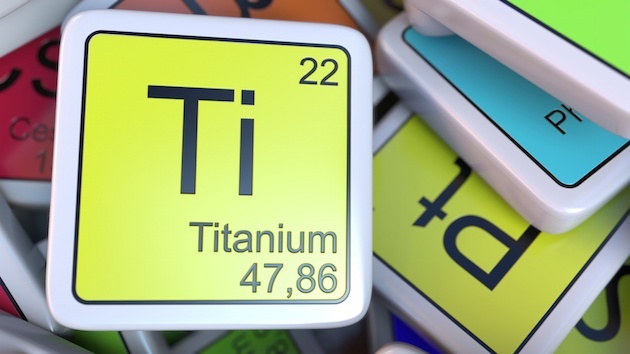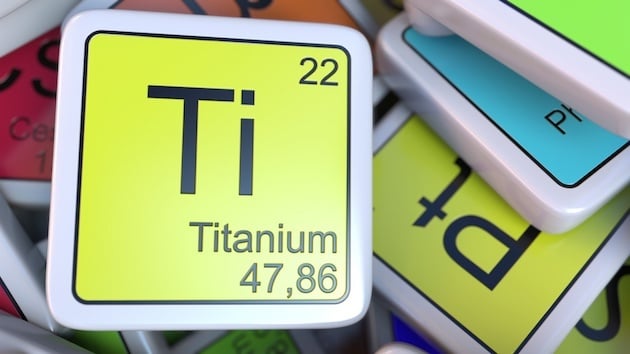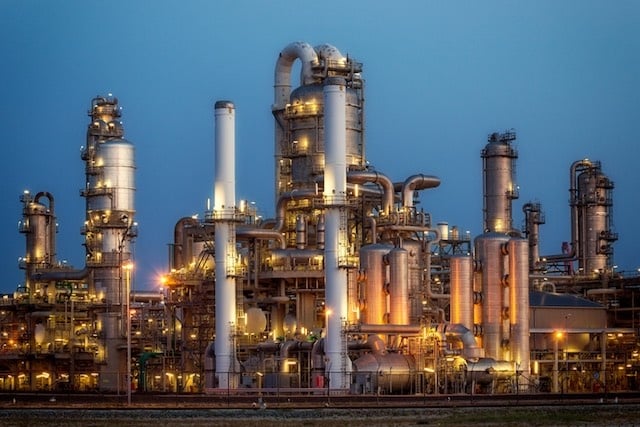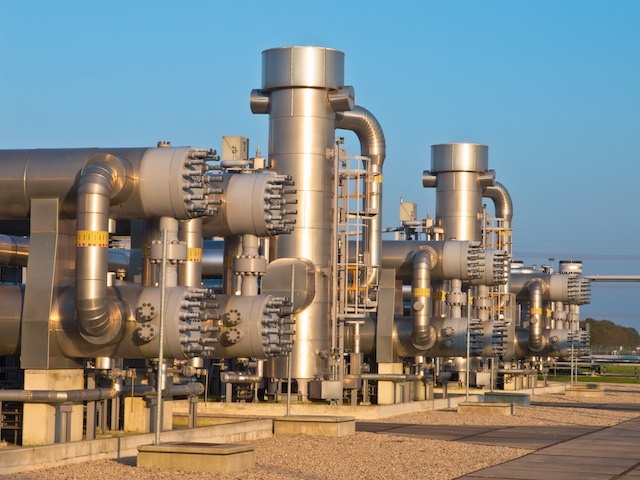
Titanium is a silver-coloured metal that is known for its low density but high strength, properties that make it useful and desirable for a wide range of purposes. In fact, it has the highest strength-to-density ratio of any metallic element.
The material was discovered in Cornwall in 1791 and it naturally occurs within mineral deposits on Earth. When extracted, it can be alloyed with a number of other elements for wide-ranging applications, such as aerospace, chemical processing, petrochemical processing, military equipment and more.
It is also naturally corrosion resistant, particularly to sea water, chlorine and oxidising acid environments. It’s a very reactive metal and when it comes into contact with oxygen it forms a passive protective oxide film. It is also shown to be resistant to reducing acids, like hydrochloric acid, sulfuric acid, phosphoric acid and hydrofluoric acid. It has a high melting point, making it useful in extreme environments where operating conditions are hot.
It’s clear to see why it is a popular addition to high-quality nickel alloys, but it must also be carefully controlled to ensure that the right balance of elements is obtained to give technically superior results.
Titanium in Corrotherm’s alloy range
Many of the nickel alloys that Corrotherm supplies have an element of titanium within their composition, some in small, controlled quantities and some where it plays a more significant role.
MONEL alloy K-500 is a material that is built from the base of MONEL alloy 400, a nickel-copper solid solution alloy. MONEL alloy K-500 is the most widely used precipitation-strengthened version of MONEL alloy 400. Titanium, along with aluminium, is added during melting. This is done to give greater strength and hardness, without affecting the excellent corrosion-resistant properties of MONEL alloy 400. Typical applications of this alloy are pump shafts and impellers, doctor blades and scrapers, oil-well drill collars and instruments, electronic components, springs and valve trim.
Another material that adds in titanium is INCOLOY alloy 925. A nickel-iron-chromium alloy is an age-hardenable material that benefits from the addition of controlled quantities of molybdenum, copper, aluminium and, of course, titanium. In this blend, titanium is around 1.90-2.40%, a significant contribution. During heat treatment of this alloy, a strengthening reaction is caused thanks to this addition of titanium, along with aluminium. This alloy is used in a number of varying applications that require its high strength and good corrosion resistance, such as down-hole and surface gas-well components, marine and pump shafting, and high-strength piping systems.
The popular INCOLOY alloy 825, which we recently covered looking at its corrosion-resistant properties, is an incredibly useful material that is employed in chemical processing, pollution control equipment, and oil well and gas gathering pipes, thanks to its corrosion resistance, strength and high-temperature resistance. This nickel-iron-chromium alloy is blended with molybdenum, copper and titanium to be able to withstand these extremely corrosive environments. In this case, titanium serves a very specific purpose: with an appropriate heat treatment, it can stabilise the alloy against sensitisation to intergranular corrosion.
Find out more about the Grades that Corrotherm supplies on our website, or contact a member of our Sales team for more information.
 All about titanium
All about titanium

